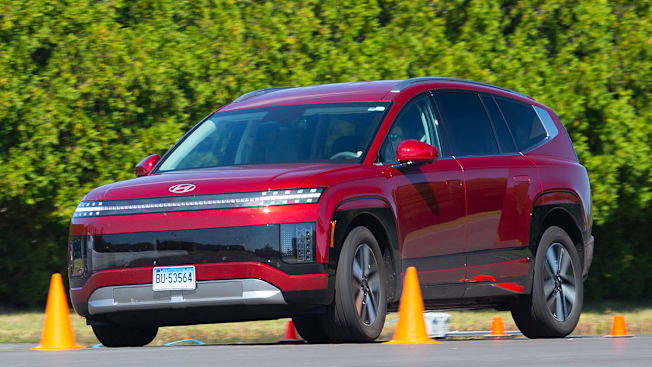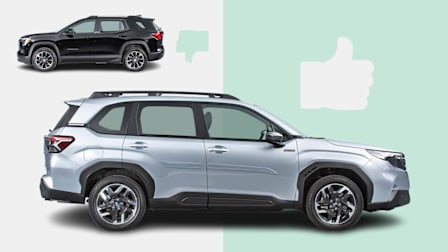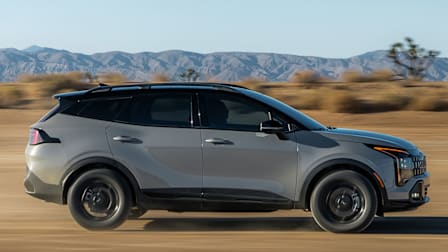What Goes Into CR's Overall Score for Cars
The score factors in road-test performance, reliability and owner satisfaction from surveys, and safety
No single attribute makes a car truly great by itself. That’s why Consumer Reports has always rated each car using a group of assessments, either data-driven or drawn from the experiences of our testers and members.

Photo: John Powers/Consumer Reports Photo: John Powers/Consumer Reports
Four Factors in the Overall Score
Every car we test gets a score that encapsulates four key factors: road test, reliability, owner satisfaction, and safety.
1. Our road-test program looks at how vehicles perform in the real world. We run roughly 50 new cars and trucks each year through more than 50 tests at our 327-acre test facility in Colchester, Conn. Those tests include acceleration, braking, emergency handling, and fuel economy, among others. We also evaluate usability, fit and finish, noise, ride, and safety systems. For electric vehicles, we consider factors such as speed and ease of charging, and range.
2. We survey Consumer Reports members to predict the reliability for new cars. Every year, we collect detailed information on their experiences with hundreds of thousands of cars. The data is presented online from among 20 key trouble areas.
3. Owner satisfaction is based on whether a CR member would definitely get the same car if they had a chance to do it over again, effectively measuring whether a car lived up to its owner’s expectations. In our exclusive Auto Survey, owners also rate their cars for the driving experience, comfort, and value.
4. Safety ratings include crash-test data from the Insurance Institute for Highway Safety (IIHS), if they’ve been conducted. Bonus or deduction points are assigned based on IIHS test results, including front crash prevention tests for pedestrians.
We award extra credit to vehicles that feature advanced safety systems proven to reduce crashes, injuries, and deaths when offered as standard equipment across all trim levels of a model, including blind spot warning and rear cross traffic warning. Likewise, we take points away from cars without those features and those models that have active driving assistance but lack an effective driver monitoring system.

Photo: John Powers/Consumer Reports Photo: John Powers/Consumer Reports
The Overall Score is not static. As new testing, reliability, owner satisfaction, and safety data become available, the scores will be updated on CR.org. That means members should always check the website for the most current assessment of what makes the best-driving, most reliable, most satisfying, and safest cars.
See the latest CR car ratings.





















